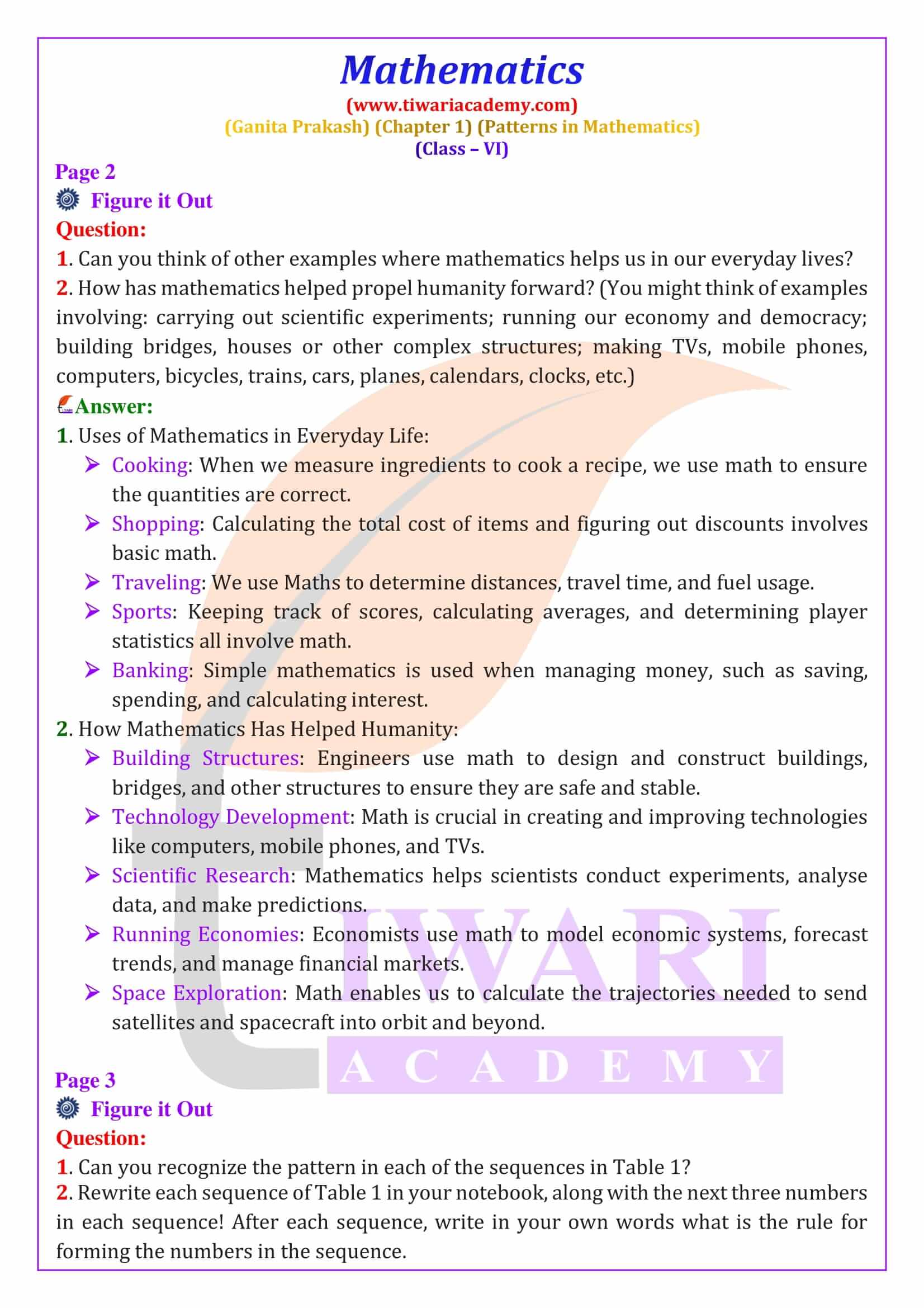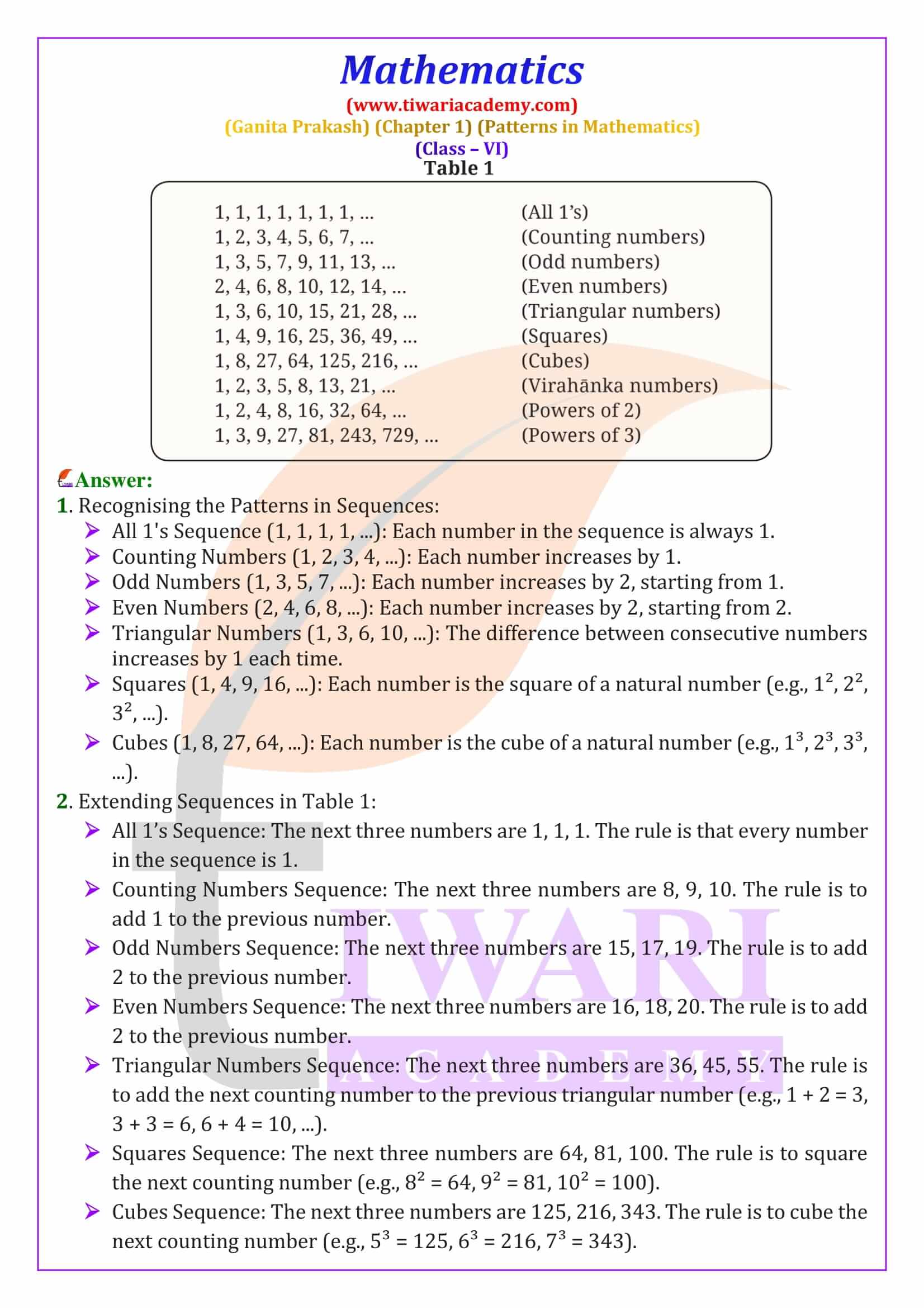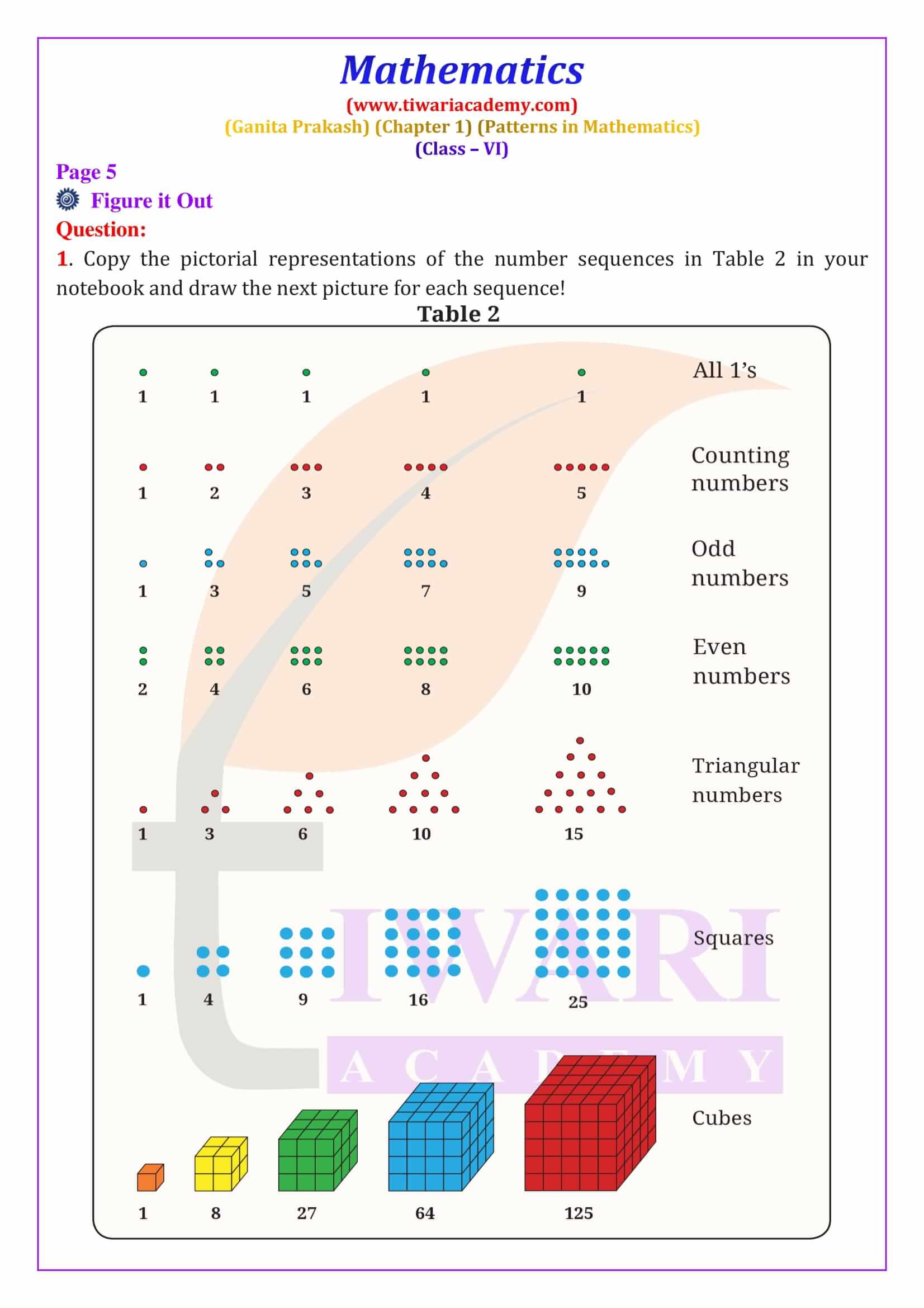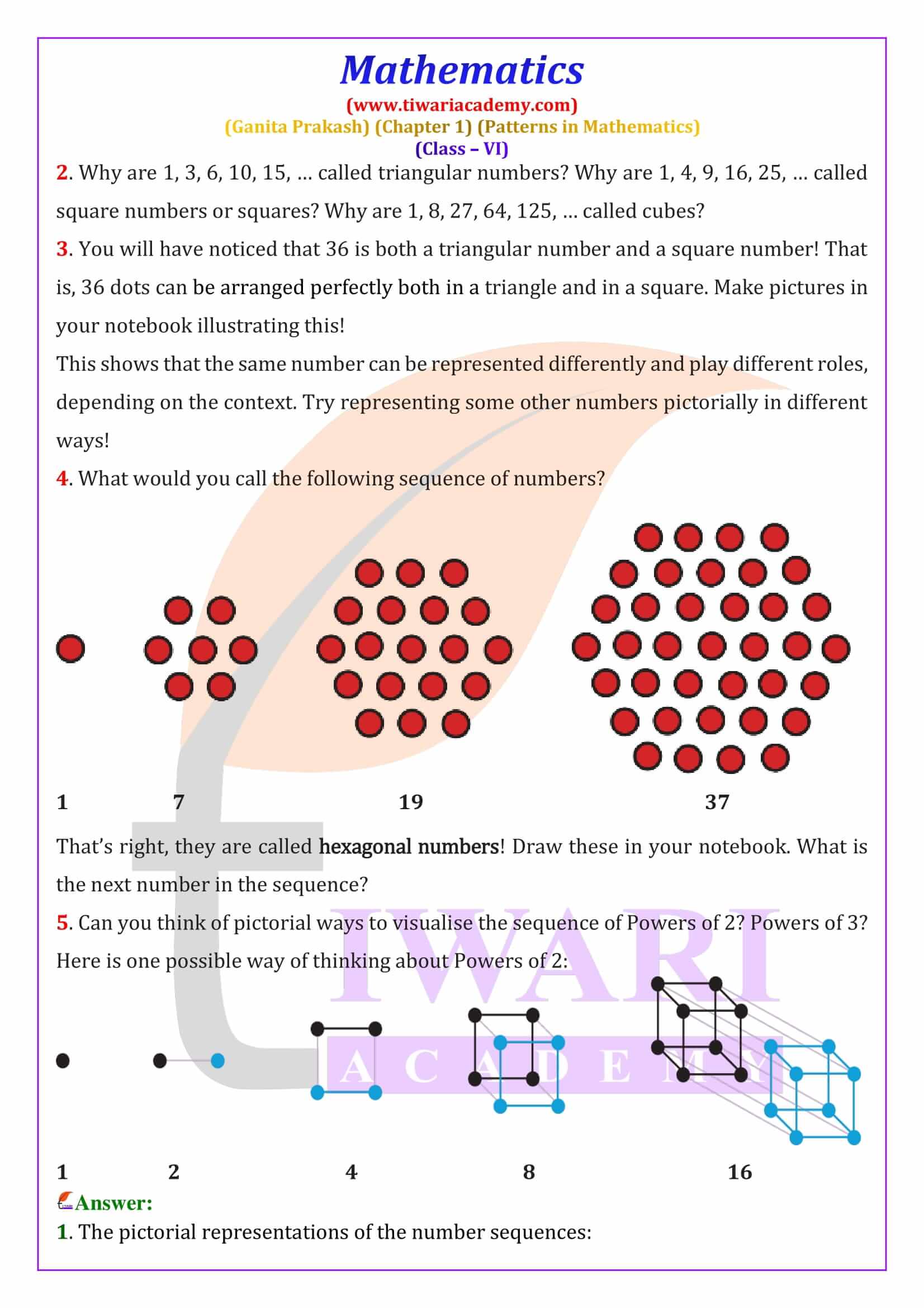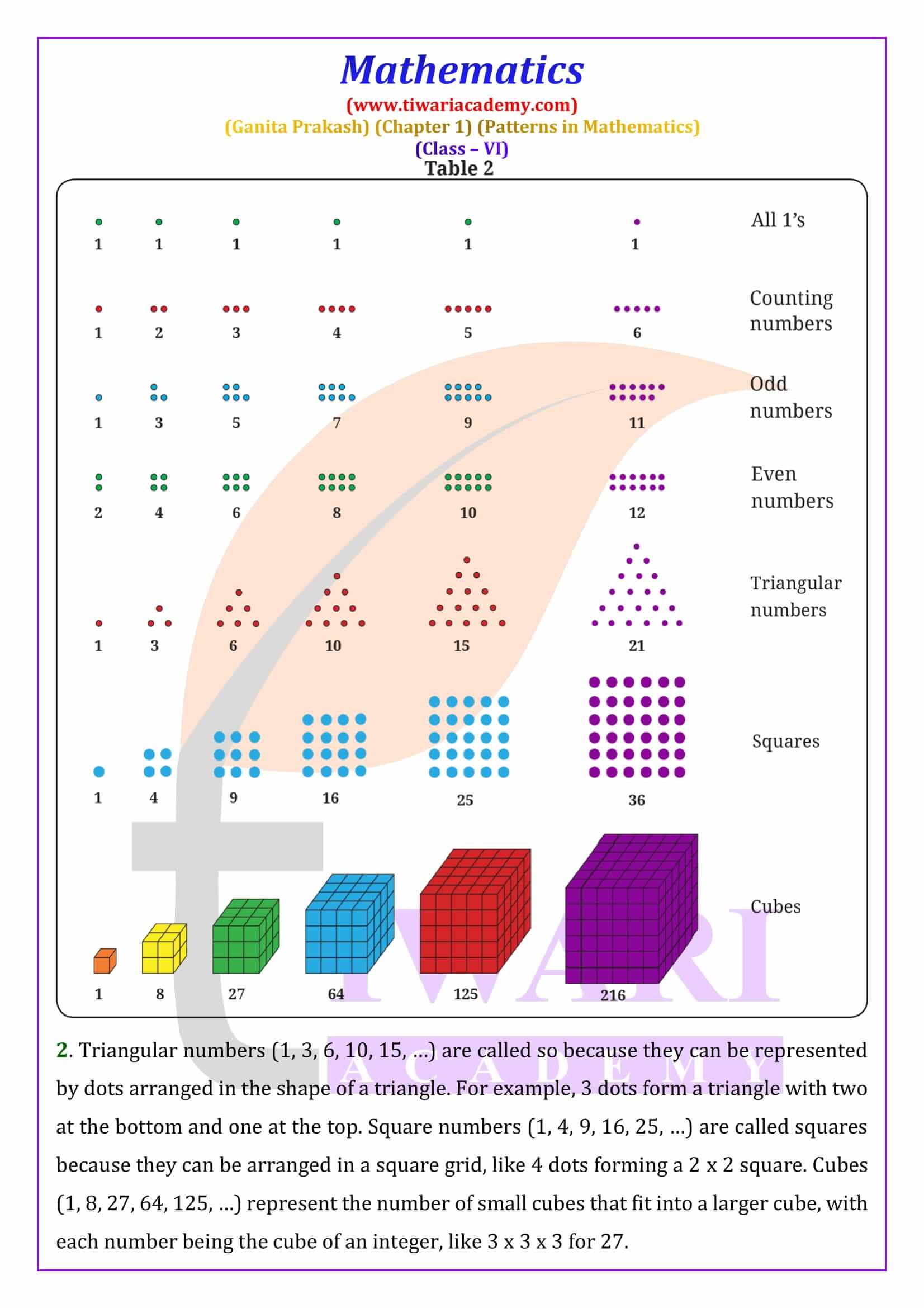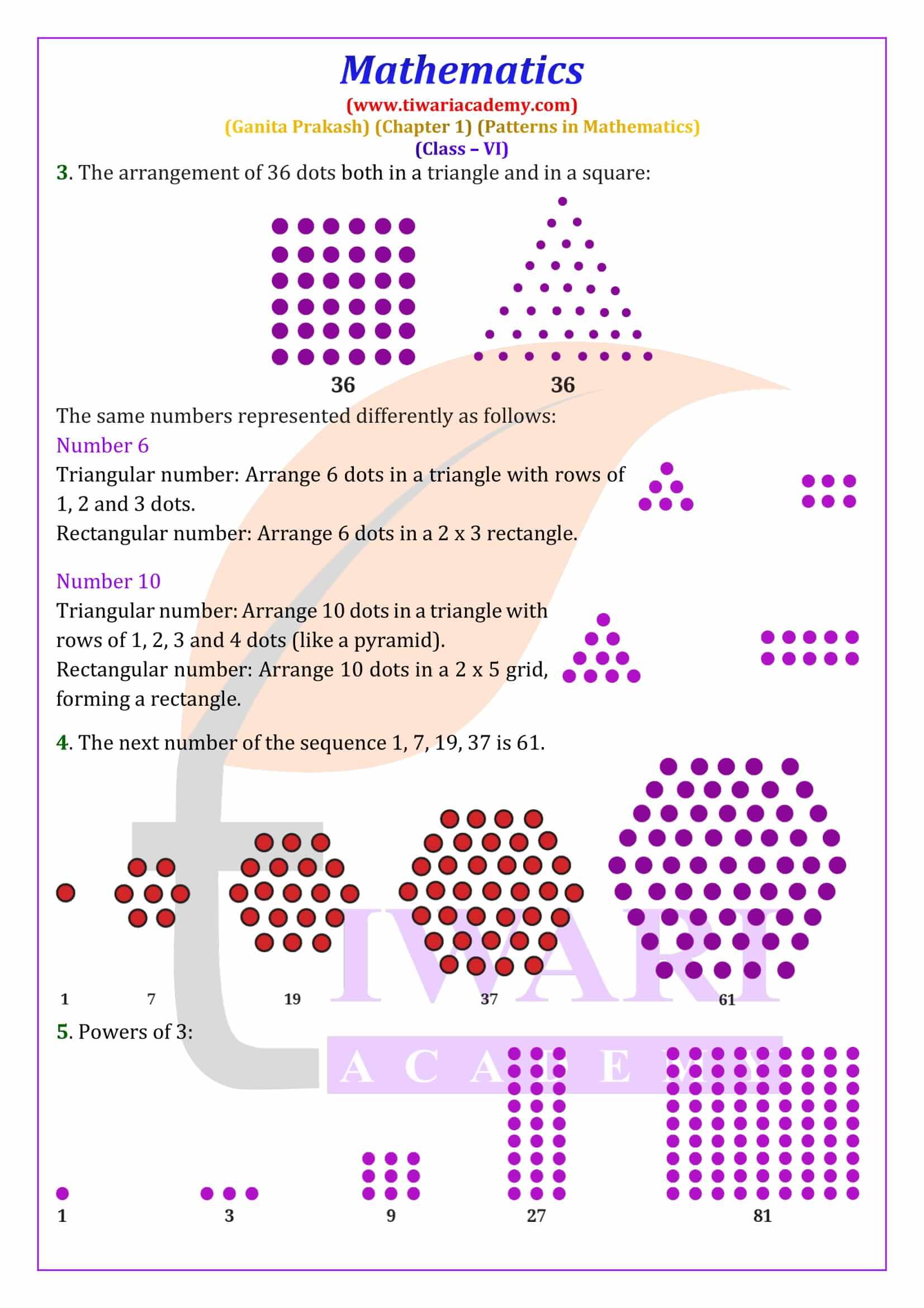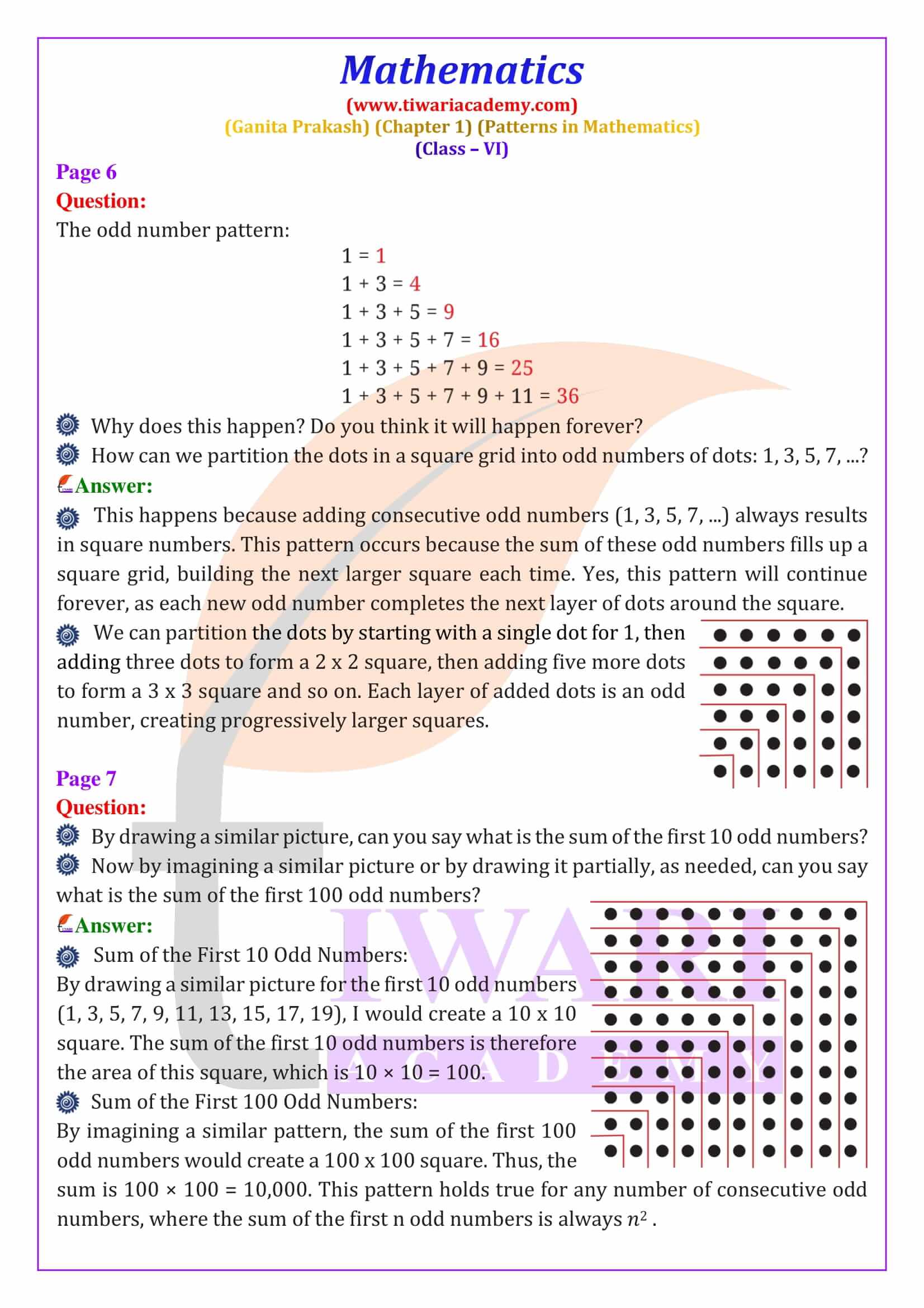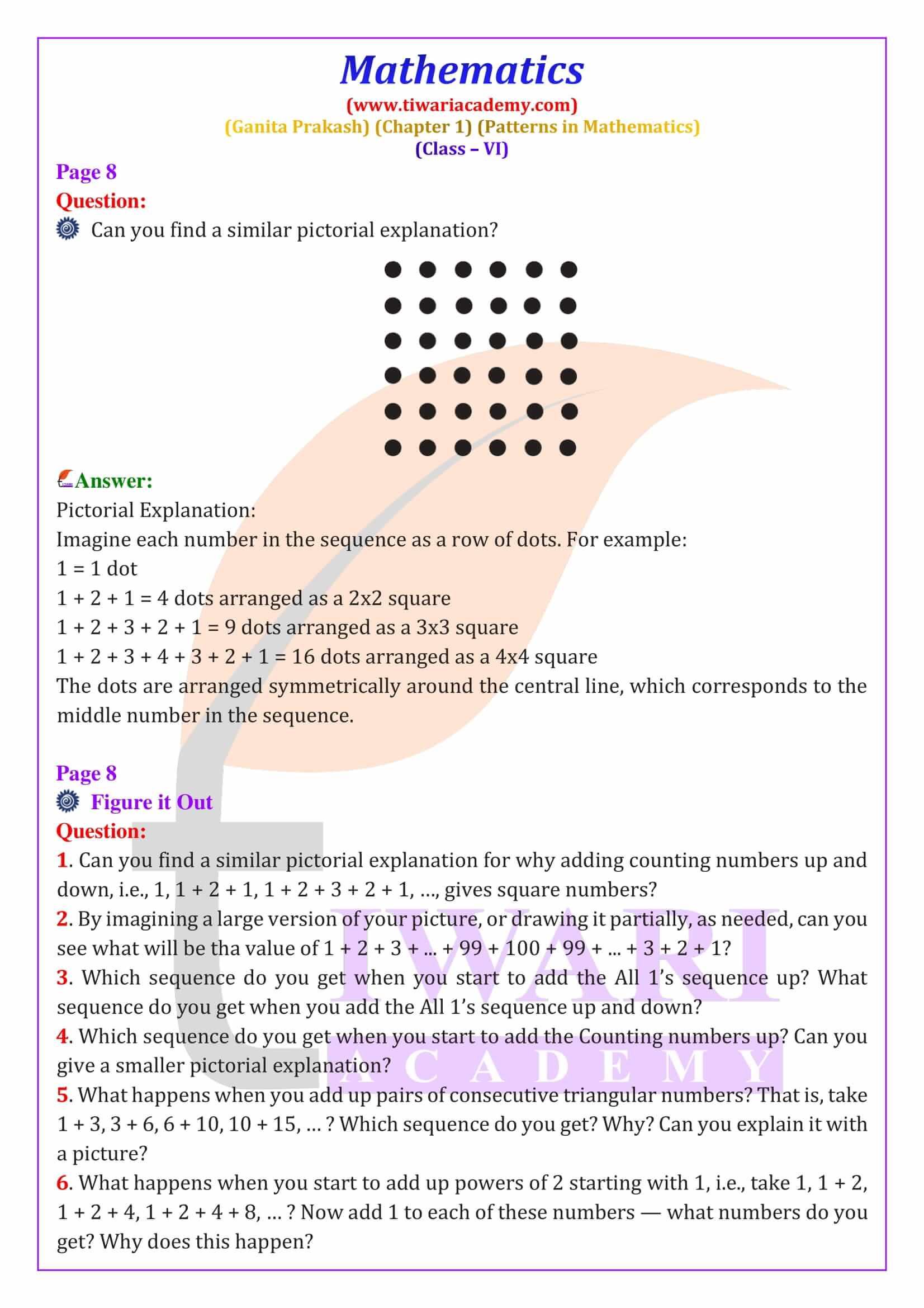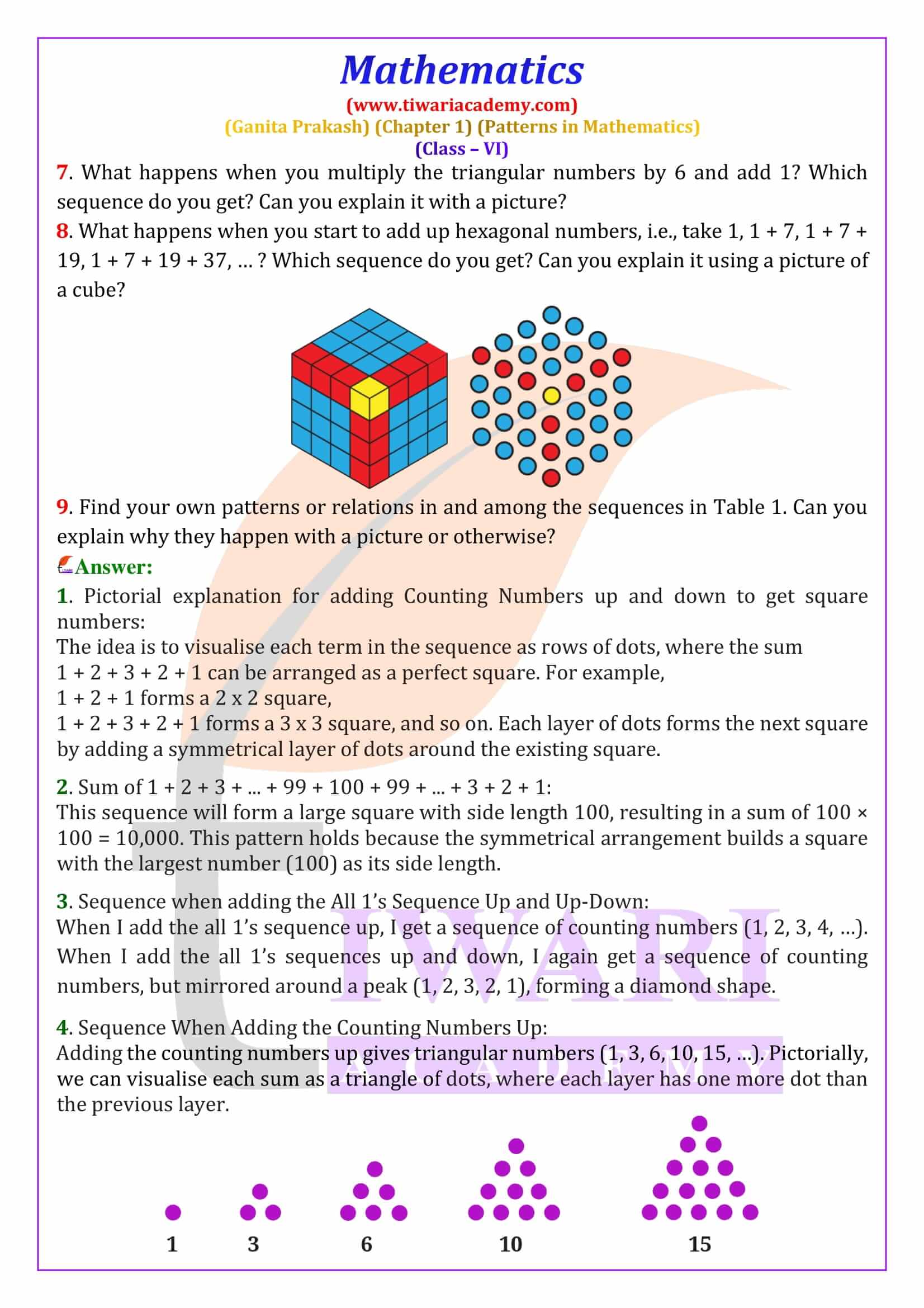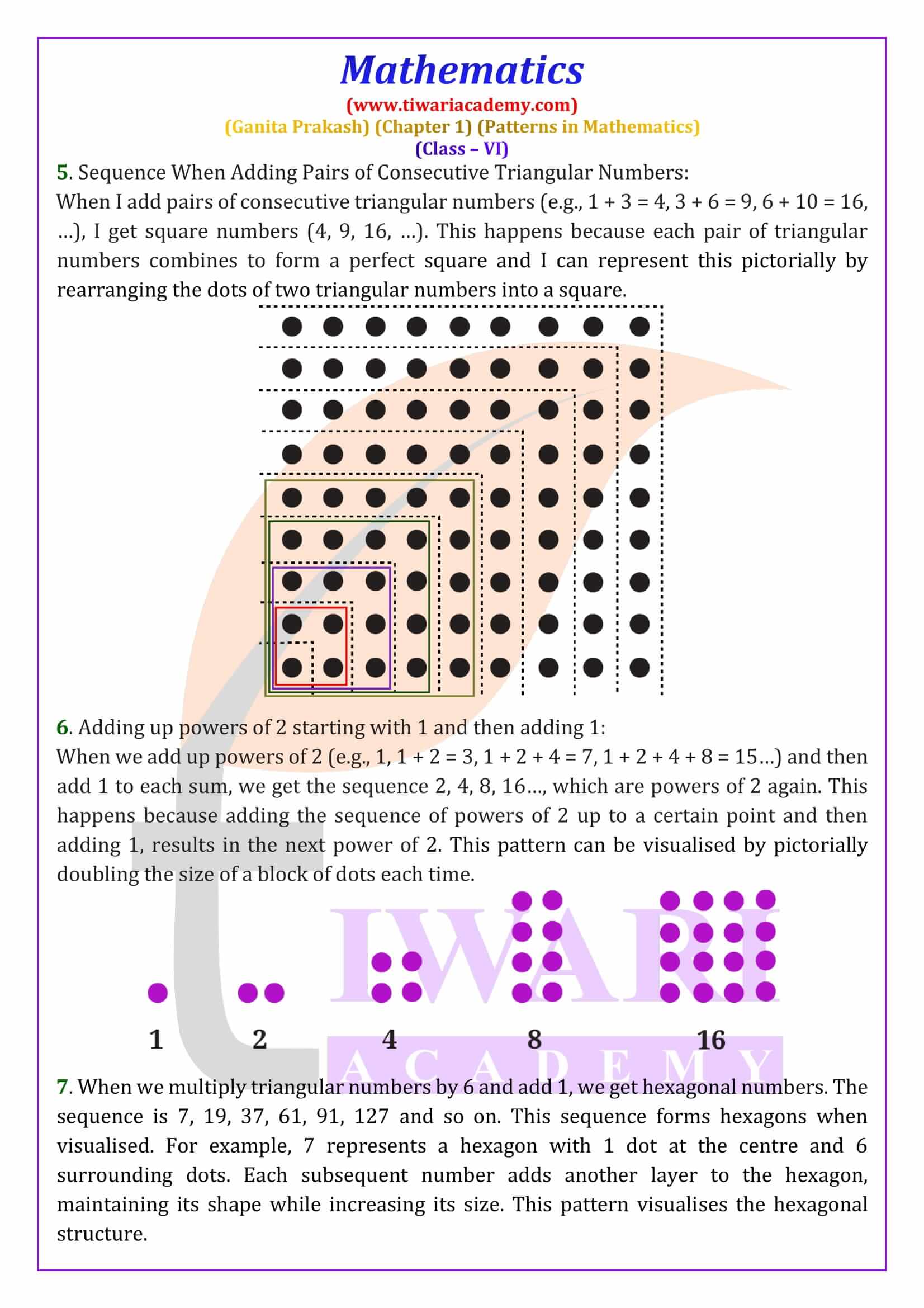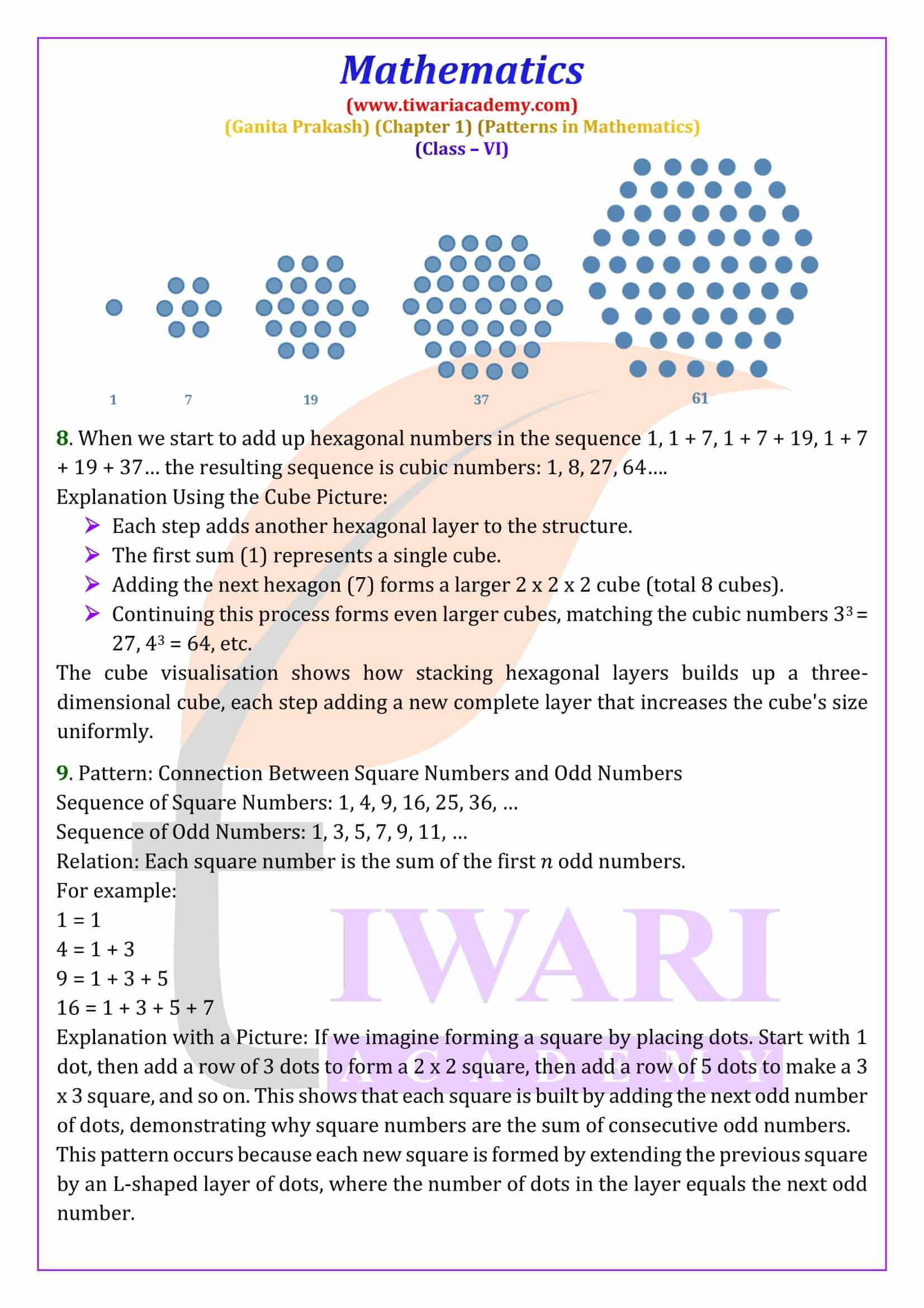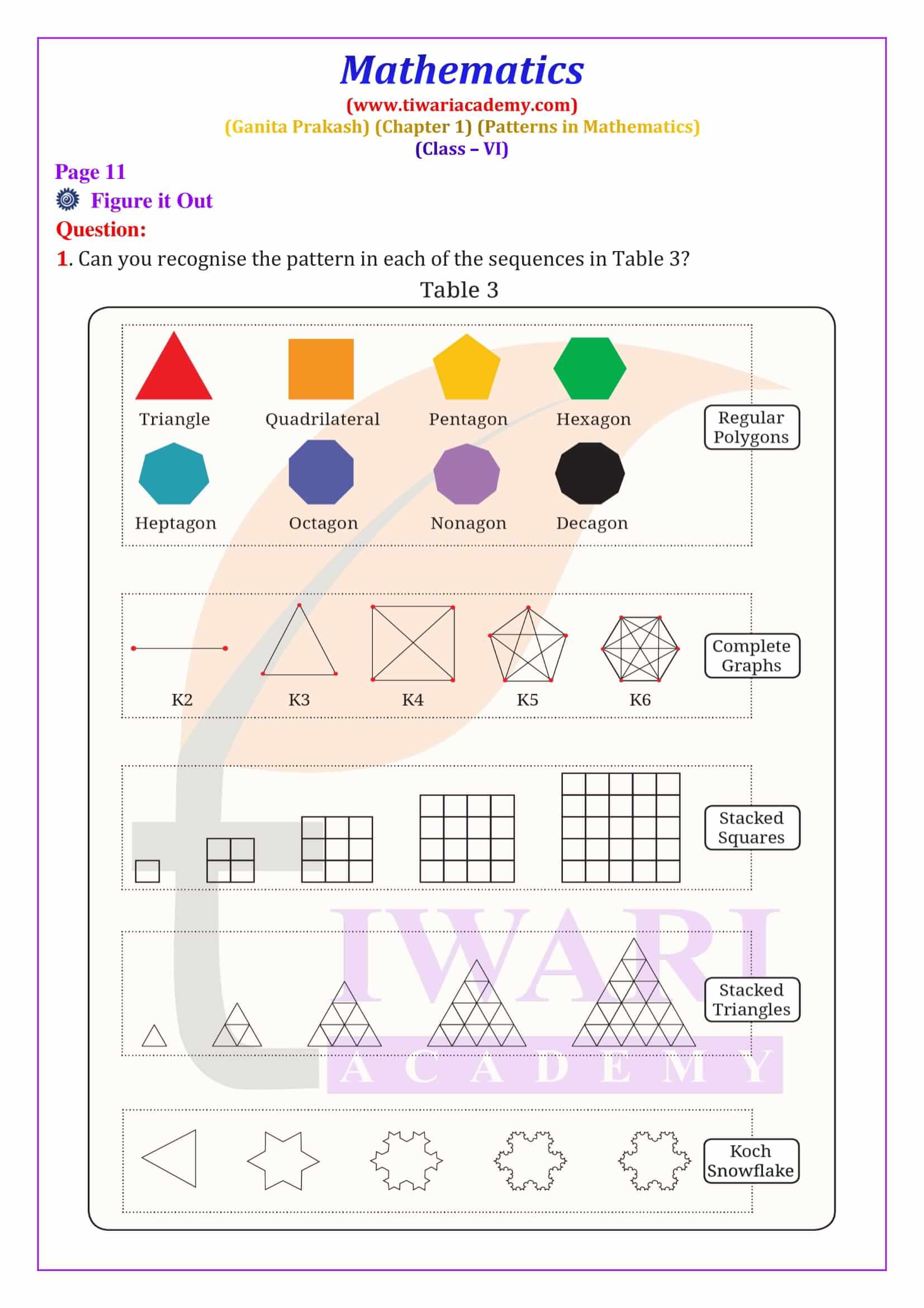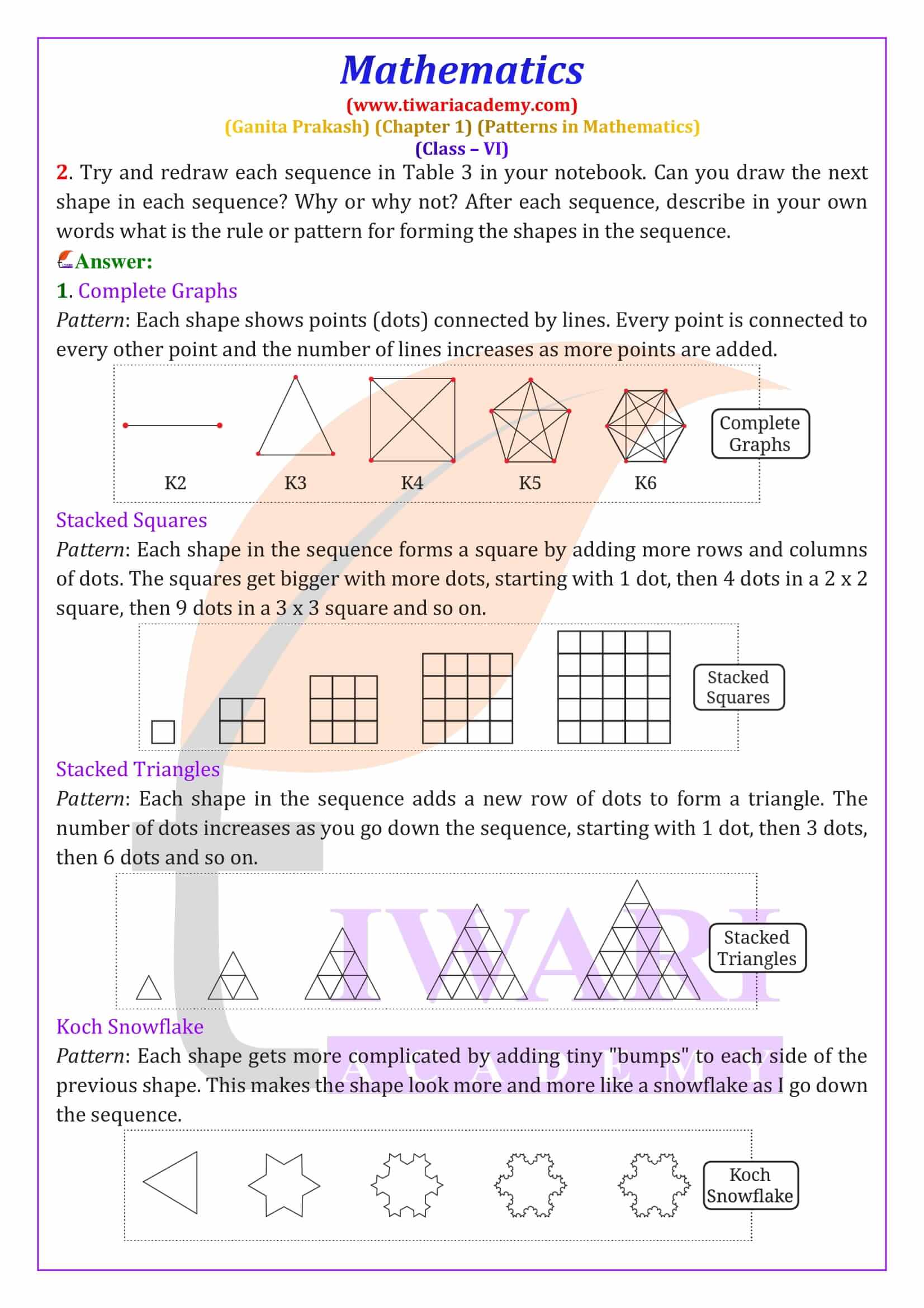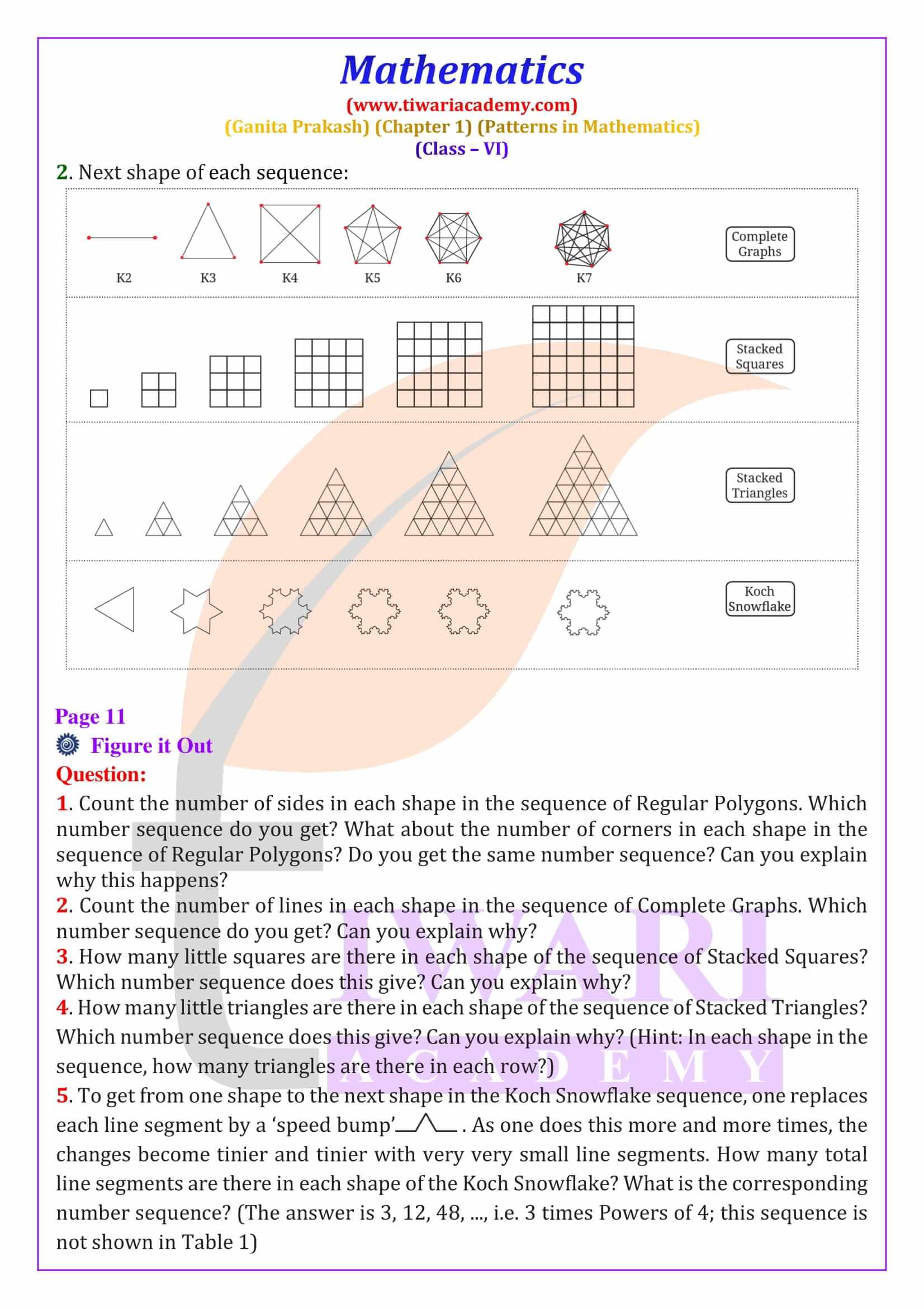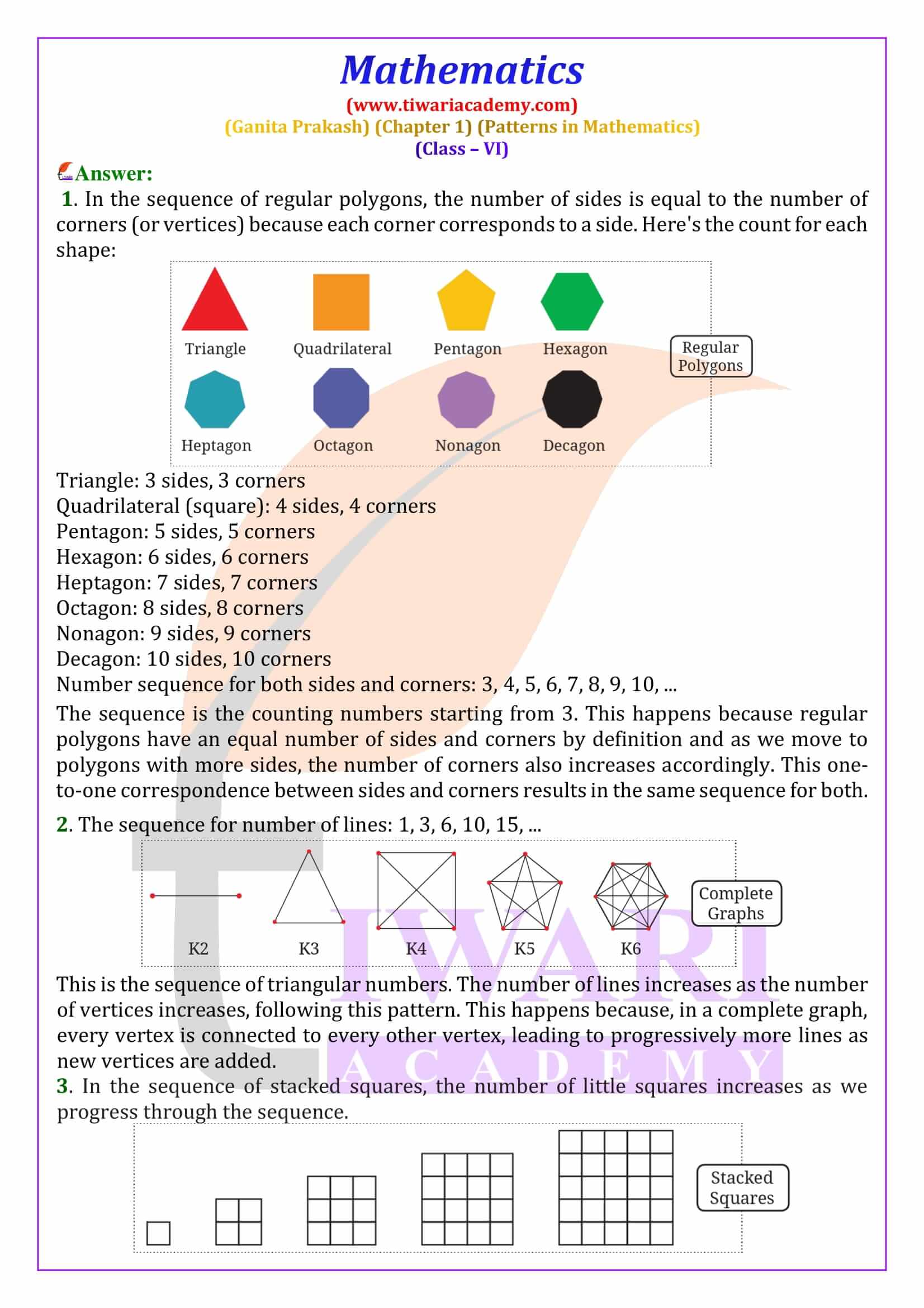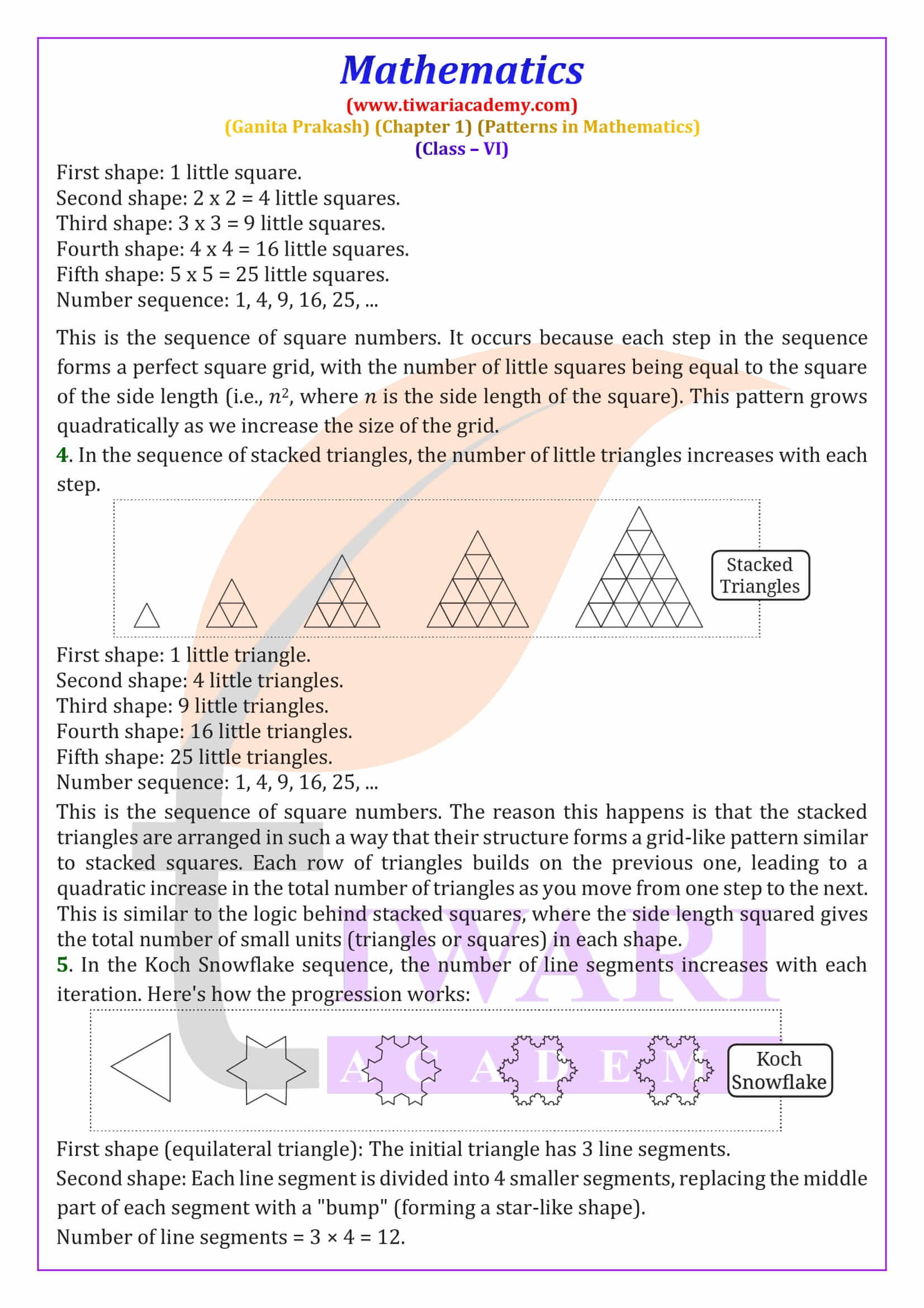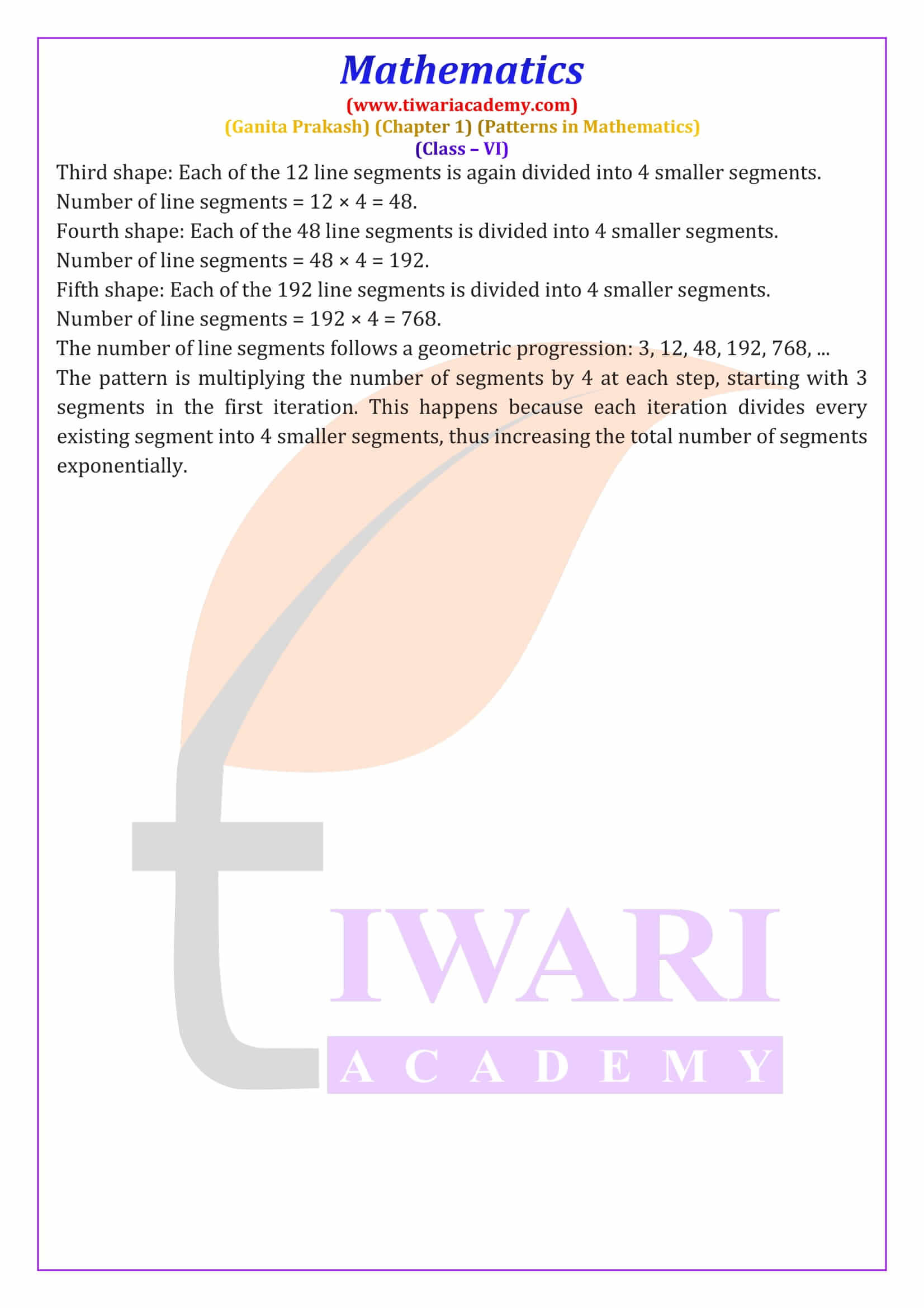NCERT Solutions for Class 6 Maths Ganita Prakash Chapter 1 Patterns in Mathematics Updated for Session 2025-26 in Hindi and English Medium. Get here simplified solutions of Class 6 Maths textbook Ganita Prakash chapter 1 with complete explanation.
Class 6 Maths Ganita Prakash Chapter 1 Patterns in Mathematics Question Answers
Class 6 Maths Ganita Prakash Chapter 1 Patterns in Mathematics – Introduction
In class 6 mathematics textbook GANITA PRAKASH chapter 1, we explore the beauty of patterns in mathematics. Patterns are everywhere around us—in nature, our homes, schools and even the stars. Mathematics helps us identify these patterns and understand why they exist. Imagine how exciting it is to see a pattern in something as simple as counting numbers or as complex as the structure of DNA! This chapter will help you discover different patterns, making you feel like a detective, searching for clues in the world of numbers and shapes. Remember, math is both art and science and discovering patterns can be fun and creative!
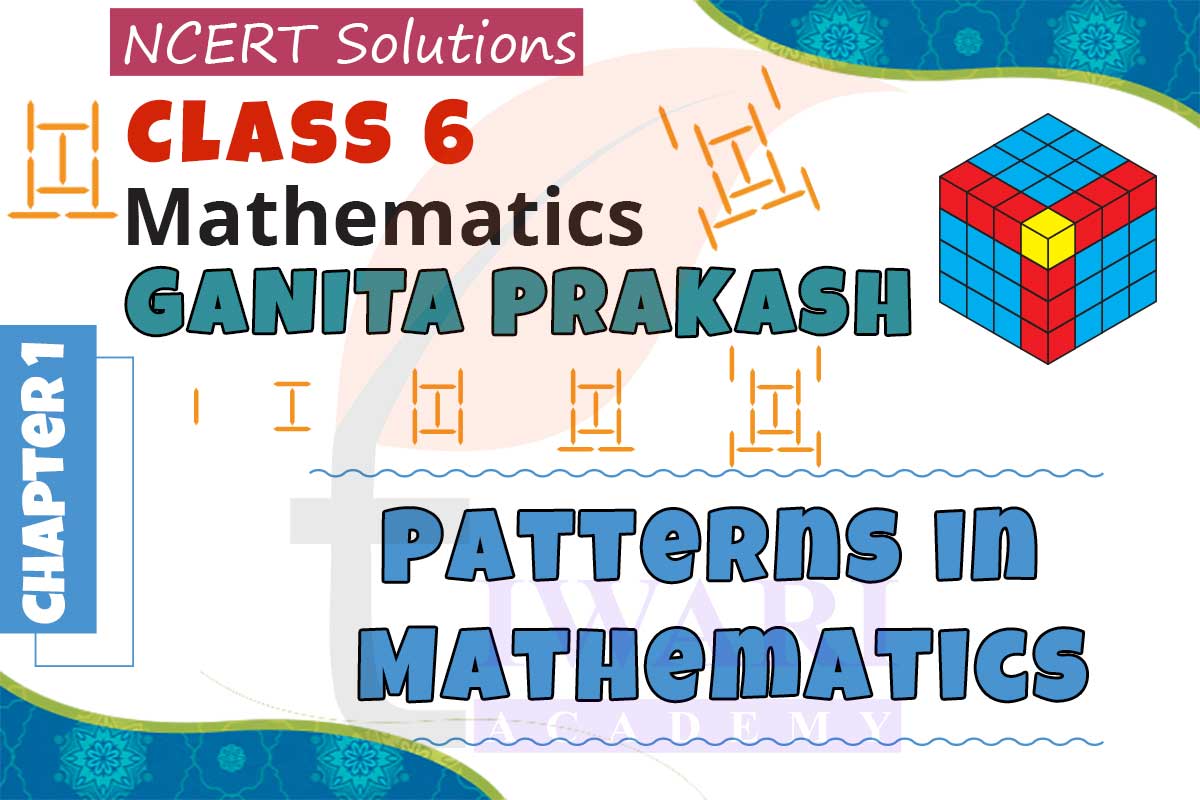
Number Patterns – Recognising Sequences
One of the most common patterns we encounter in mathematics is number sequences. For example, counting numbers like 1, 2, 3, 4 or even numbers like 2, 4, 6, 8, follow specific rules. These rules are easy to identify, making math feel predictable and structured. In this chapter, you will learn about various number sequences such as triangular numbers (1, 3, 6, 10…), squares (1, 4, 9, 16…) and cubes (1, 8, 27, 64…). Each sequence has a unique rule that generates the next number and you will be challenged to figure out these rules for yourself!
Class 6 Maths Ganita Prakash: Visualising Patterns
Patterns can also be seen through pictures. For instance, when we talk about square numbers, we can arrange dots in a square grid, helping us visualise how the numbers grow. Triangular numbers can be seen as dots forming triangles. This visualisation helps us understand the pattern even better. In this chapter, you will practice drawing these visual patterns, which will make it easier to grasp the concepts behind number sequences.
Exploring Shape Patterns
Mathematics isn’t just about numbers; patterns also exist in shapes. Regular polygons, like triangles, squares, pentagons, and hexagons, all follow predictable patterns. For instance, the number of sides in a polygon can be described using counting numbers. These shape sequences can be just as fascinating as number sequences and they show how connected different areas of mathematics are. By observing shapes, you will discover new ways to see the world of math.
Relations Between Number and Shape Patterns
Sometimes, number sequences and shape sequences are connected. For example, the number of sides in a shape sequence of polygons follows a number sequence, starting from 3 for a triangle, 4 for a square and so on. This relationship between numbers and shapes is what makes mathematics so beautiful and interconnected. Understanding these connections will give you a deeper insight into both number and shape patterns.
Adding Numbers in Patterns: Class 6 Maths
One interesting activity in this chapter is adding odd numbers. For example, when you add 1 + 3 + 5, you get 9, which is a square number. This pattern continues forever! The chapter explains that visualizing this through pictures can help us understand why this happens. By drawing squares and counting dots, you can see how adding odd numbers gives us square numbers. This concept shows how patterns can be hidden in simple things like adding numbers.
Throughout this chapter, we’ve explored patterns in numbers and shapes, learning how they are connected and how we can visualize them. Now, to fully master the concepts and solve more exciting problems, I encourage you to visit Tiwari Academy for the complete NCERT Solutions for all chapter. Tiwari Academy offers step-by-step explanations and answers that will help you practice and deepen your understanding of patterns in mathematics. Keep discovering and exploring, because math is full of exciting patterns waiting to be uncovered!
